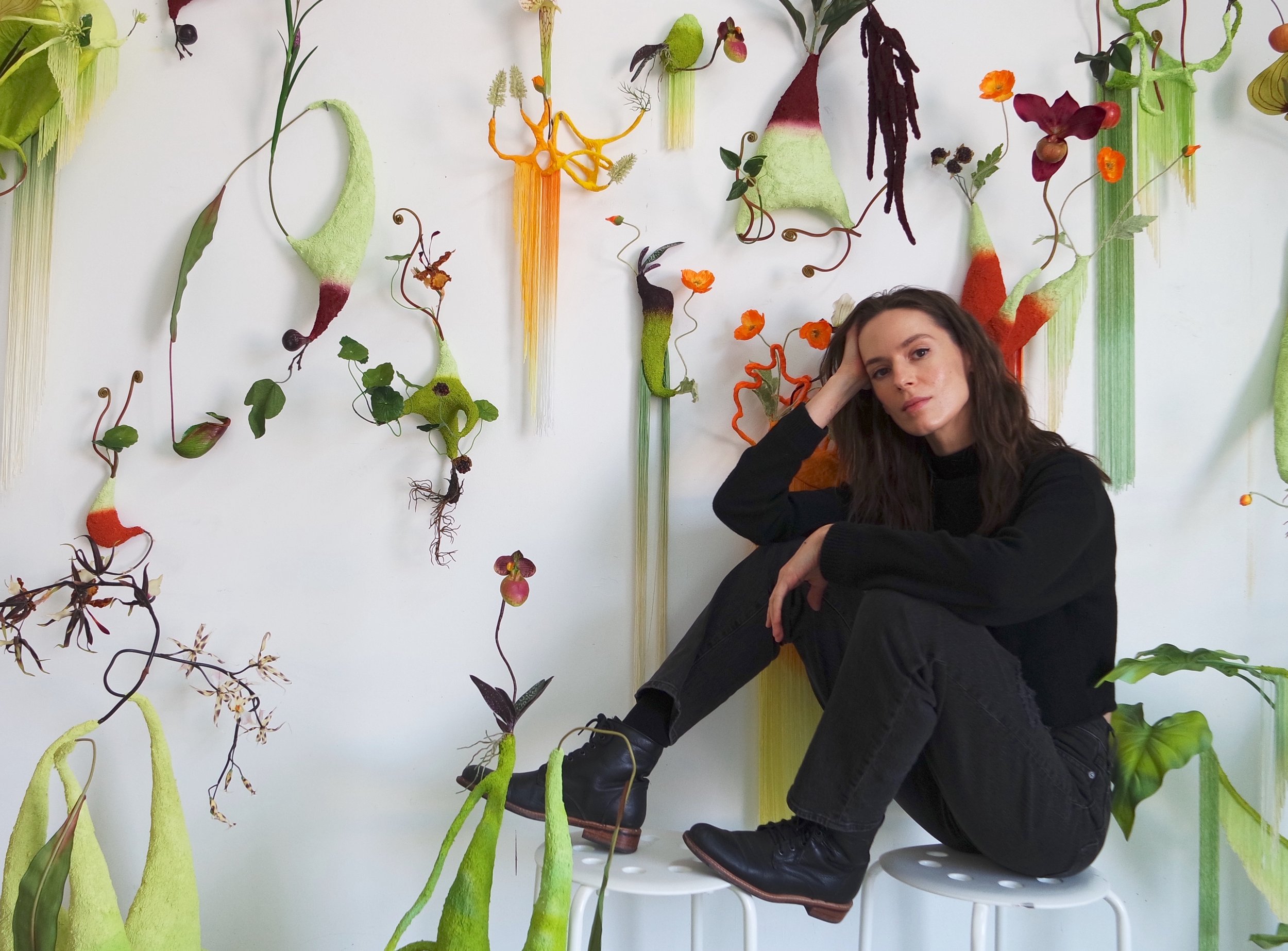About me
Julia Blume is a New York based sculptor, painter, and writer. She received her MFA from SFAI in 2018, after earning her BA and MA in linguistics from Columbia University and UC San Diego. In 2023, she opened her solo show, The Walled Garden, at The Front (NYC), and her two person show, as long as you want at My Pet Ram (NYC). Recent group shows include Kathryn Markel Fine Arts, Mizuma & Kips, RSOAA, Field Projects, Paradice Palase, and Established Gallery. She has participated in residencies with Signal Fire, ChaNorth, and ArtsIceland, and she was a fellow in Tania Bruguera’s Escuela de Arte Útil. She was a finalist for the Hopper Prize, and her work has been featured in Two Coats of Paint, Create! Magazine, Youngspace, Bat City Review, Friend of the Artist, and more.
Through sculpture, painting, and narrative, Julia Blume imagines a world where plants and more-than-human animals conspire to break down the received dichotomies of life/matter, artificial/natural, inside/outside, and human/animal.
The focus of her recent work is sculptures made from wire mesh, epoxy, pumice, acrylic paint, dyed polyester fringe, meticulously sourced faux flowers, and more. In these sculptures, plants that have been cultivated by humans for economic and agricultural reasons come together to create sinuous, lumpy, symbiotic collectives which reflect their self-determination. Net-like forms reference roots weaving through cracks in walls and tearing them down, and tuber-like forms suggest loci of plant interaction and communication. These organic forms are intentionally created from highly processed materials, leading the viewer to question the false dichotomy of “natural” and “artificial”.

